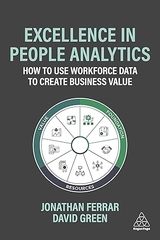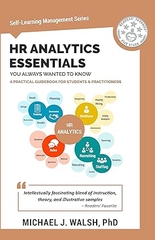-
-
-
Tổng tiền thanh toán:
-
-
Thông tin
-
Tìm sách theo yêu cầu
This book provides a guide to businesses on how to use analytics to help drive from ideas to execution. Analytics used in this way provides "full lifecycle support" for business and helps during all stages of management decision-making and execution.
The framework presented in the book enables the effective interplay of business, analytics, and information technology (business intelligence) both to leverage analytics for competitive advantage and to embed the use of business analytics into the business culture. It lays out an approach for analytics, describes the processes used, and provides guidance on how to scale analytics and how to develop analytics teams. It provides tools to improve analytics in a broad range of business situations, regardless of the level of maturity and the degree of executive sponsorship provided.
The concepts include:
http://www.amazon.com/Business-Analytics-Practitioners-International-Operations/dp/1461460794
The framework presented in the book enables the effective interplay of business, analytics, and information technology (business intelligence) both to leverage analytics for competitive advantage and to embed the use of business analytics into the business culture. It lays out an approach for analytics, describes the processes used, and provides guidance on how to scale analytics and how to develop analytics teams. It provides tools to improve analytics in a broad range of business situations, regardless of the level of maturity and the degree of executive sponsorship provided.
The concepts include:
- Framework
- Three levels of analytics. Many analytics teams are at #2, where they are called on to provide analytics, acting as providers of data or advice. At #3, analytics is used to drive value from making effective decisions.
- Six components of analytics, three that fall into the traditional buckets of analytics, business, and IT (Decision Modeling, BI, and Decision Making), and three that get misplaced and trip up the practice of analytics: Data Stewardship, Decision Execution, and Decision Framing.
- Decisions occur in four layers: strategic, planning, scheduling, and workflow. Analytics models enable and interconnect these layers. These analytics layers can map to the systems in the Viable System Model proposed by Stafford Beer.
- Decision framing for the decision layers
- Decision modeling for the decision layers, including optimization, statistics, machine learning, surveying, experiments, etc. Defines what an analytics deliverable should contain.
- Decision making and managing biases
- Decision execution as a closed loop. How to apply what we've learned about motivation, incentive systems, and management by objectives.
- The evolution of BI (business intelligence) tools into closed-loop analytics systems that can place analytics tools in the context of business apps.
- Data management including assessment, scrubbing, enrichment, tagging, hierarchies, and categories.
- Making organizations smarter by driving a culture of analytics
- Building an analytics capability, such as an Analytics CoE (Center of Excellence)
- Analytics methods, that can serve as project templates
http://www.amazon.com/Business-Analytics-Practitioners-International-Operations/dp/1461460794
Tại web chỉ có một phần nhỏ các đầu sách đang có nên nếu cần tìm sách gì các bạn có thể liên hệ trực tiếp với Thư viện qua Mail, Zalo, Fanpage nhé
Đăng ký nhận tin qua email
Hãy đăng ký ngay hôm nay để nhận được những tin tức cập nhật mới nhất về sản phẩm và các chương trình giảm giá, khuyến mại của chúng tôi.












